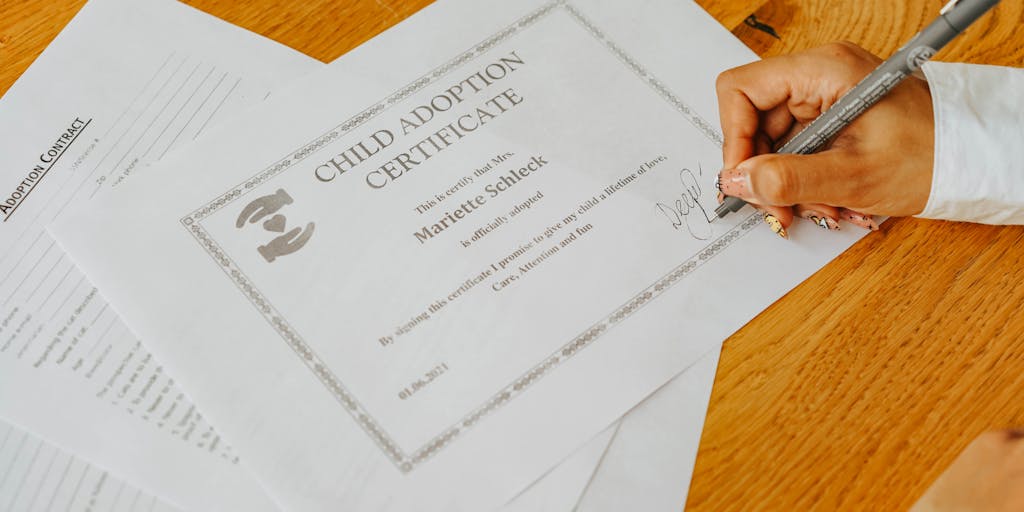When navigating the complexities of child support, one question often arises: is child support taxable in California? Understanding the tax implications of child support can significantly impact both parents’ financial planning. Let’s dive into the details to clarify this important issue.
How California Defines Child Support

In California, child support is a legal obligation that one parent pays to the other to help cover the costs of raising their child. This support is typically determined during divorce proceedings or through a court order. The amount is calculated based on various factors, including the income of both parents, the needs of the child, and the amount of time each parent spends with the child.
California law emphasizes the child’s best interests, ensuring that both parents contribute to their upbringing. The state uses a formula that considers both parents’ incomes and the percentage of time each parent has custody. This structured approach aims to provide a fair and consistent method for determining child support obligations.
Child Support and Taxes in a California Divorce

Now, let’s address the burning question: is child support taxable? The short answer is no. In California, child support payments are not considered taxable income for the receiving parent, nor are they tax-deductible for the paying parent. This means that if you are receiving child support, you do not need to report it as income on your tax return. Conversely, if you are paying child support, you cannot deduct those payments from your taxable income.
This tax treatment aligns with federal tax laws, which also stipulate that child support is not taxable. According to the Joyce Holcomb Law, this can simplify financial planning for both parents, as they do not have to worry about the tax implications of these payments.
However, it’s essential to keep accurate records of all child support payments made or received. This documentation can be crucial in case of disputes or if you need to provide proof of payments in the future. If you have questions about your specific situation, consulting with a family law attorney can provide clarity and guidance.
Additionally, if you’re navigating a divorce and child support arrangement, you might find it helpful to explore resources like the California Child Support website, which offers a wealth of information on child support calculations and obligations.
In conclusion, while child support is a critical aspect of parenting post-divorce, it does not carry tax implications in California. Understanding this can help you focus on what truly matters: the well-being of your child and maintaining a healthy co-parenting relationship.
Child Support and Tax Deductions in California

When navigating the complexities of child support in California, one of the most pressing questions often revolves around taxes. You might be wondering, “Is child support taxable?” This is a crucial aspect to understand, especially as it can significantly impact your financial situation. In California, the rules are quite clear: child support payments are not considered taxable income for the recipient, nor are they deductible for the payer. This means that if you are receiving child support, you do not need to report it as income on your tax return, and if you are paying it, you cannot deduct those payments from your taxable income.
Understanding this distinction can help you plan your finances more effectively. For instance, if you’re budgeting for your expenses, knowing that child support won’t affect your taxable income can provide some peace of mind. It’s also worth noting that this aligns with federal tax regulations, as outlined by the IRS.
Is child support taxable for the recipient, or deductible for the payer?
To put it simply, child support is neither taxable for the recipient nor deductible for the payer. This can sometimes lead to confusion, especially when compared to alimony, which has different tax implications. For example, alimony payments are taxable income for the recipient and deductible for the payer, but child support operates under a different set of rules. This distinction is important because it affects how both parties approach their financial planning.
Imagine you’re a parent who pays child support. You might be hoping to reduce your taxable income by deducting those payments, but unfortunately, that’s not an option. On the flip side, if you’re receiving child support, you can enjoy that financial support without worrying about it impacting your tax bracket. This clarity can help both parents focus on what truly matters: the well-being of their child.
My ex-wife and I have one child. My wife has custody and I pay child support. Can we both claim her as a dependent?
This is a common question among divorced or separated parents. Generally, the custodial parent—the one with whom the child lives for the majority of the year—has the right to claim the child as a dependent. However, there are exceptions. If you and your ex-wife can come to an agreement, you may be able to alternate years or share the dependency exemption. This can be beneficial for both parties, especially when it comes to tax credits and deductions that can significantly reduce your tax liability.
It’s essential to document any agreements you make regarding dependency claims to avoid potential disputes with the IRS. If you’re unsure about how to navigate this, consulting with a tax professional or a family law attorney can provide clarity and ensure you’re making the best decisions for your financial situation. For more detailed information, you might find resources like Heath Baker Law helpful.
Why Isn’t Child Support Tax Deductible In California?

When it comes to child support in California, many parents wonder about the tax implications. You might be asking yourself, “Why can’t I deduct my child support payments like I can with other expenses?” The answer lies in the nature of child support itself. Unlike alimony, which is considered a transfer of income and can be deducted by the payer, child support is designed specifically to benefit the child. This distinction is crucial because it reflects the intent of the law: to ensure that children receive the financial support they need without penalizing the paying parent.
In California, child support payments are not taxable income for the recipient, nor are they tax-deductible for the payer. This means that if you’re paying child support, you won’t see any tax benefits from those payments. The rationale behind this is straightforward: child support is meant to cover the child’s living expenses, education, and other needs, rather than being a form of income for the custodial parent.
Understanding this can help you plan your finances better. If you’re a parent making these payments, it’s essential to budget accordingly, knowing that you won’t receive any tax relief. For more detailed information on the tax implications of child support, you can check out resources like California Divorce Online.
What Tax Credits are Available to the Child Support Payor?
While child support payments themselves aren’t deductible, there are still some tax credits and benefits that you might be eligible for as a payor. For instance, if you’re a parent who pays child support, you may qualify for the Child Tax Credit, which can provide significant financial relief. This credit is designed to help families with children under 17 and can reduce your tax bill dollar-for-dollar.
Additionally, if you’re also covering expenses like medical care or education for your child, you might be able to claim those costs under different tax provisions. For example, if you’re paying for your child’s health insurance, you may be able to include those premiums as part of your medical expenses when filing your taxes. It’s always a good idea to consult with a tax professional to explore all available options and ensure you’re maximizing your benefits.
Moreover, if you’re interested in learning more about how taxes affect your financial situation, you can visit Sacramento Divorce for additional insights.
Does the New Alimony Law Affect Child Support Tax Deductions?
With recent changes in alimony laws, many are curious about how these might impact child support. The new regulations have clarified that alimony payments are no longer tax-deductible for the payer, which aligns with the treatment of child support. This means that while alimony and child support are treated differently, the overarching principle remains the same: neither is deductible for the payer in California.
This shift can have significant implications for parents navigating their financial responsibilities. If you’re paying both alimony and child support, it’s essential to understand how these changes affect your overall tax situation. The lack of deductions can lead to higher taxable income, which might influence your financial planning and budgeting strategies.
For a deeper dive into how these laws interact, you might find it helpful to read more on Orange County Family Law.
When navigating the complexities of child support, one question often arises: is child support taxable in California? Understanding the tax implications of child support payments can significantly impact both the paying and receiving parents. Let’s delve into the details to clarify this important issue.
Firstly, Payments Must Be Clearly Laid Out
Before we dive into the tax implications, it’s crucial to establish that child support payments must be clearly defined in a legal agreement. This clarity helps avoid misunderstandings and ensures that both parents are on the same page. In California, child support is typically determined by the state’s guidelines, which consider various factors such as income, the number of children, and the needs of the children.
For child support to be considered non-taxable, it must be explicitly labeled as such in the court order or agreement. If payments are not clearly designated as child support, they might be misclassified, leading to potential tax complications. This is why it’s essential to consult with a family law attorney to ensure that your agreement is properly structured. You can find more information on this topic at California Courts Self-Help.
What To Do If Parents Live Apart For the Last Six Months
Living arrangements can complicate child support situations, especially if parents have been living apart for an extended period. If you and your co-parent have been separated for the last six months, it’s important to understand how this affects your child support obligations. In California, the law recognizes that living apart can change financial responsibilities, and adjustments may be necessary.
During this time, it’s advisable to keep detailed records of all payments made and received. This documentation can be invaluable if disputes arise or if you need to modify the support agreement. Additionally, if you’re considering a modification, consulting with a legal expert can provide clarity on how your living situation impacts your obligations. For further insights, check out Moshtael Law.
Special Tax Considerations for the Paying Parent
For the paying parent, understanding the tax implications of child support is essential. In California, child support payments are not considered taxable income for the recipient, nor are they tax-deductible for the payer. This means that if you are making child support payments, you cannot deduct these amounts from your taxable income when filing your taxes.
This distinction is crucial because it affects your overall financial planning. For instance, if you’re budgeting for your expenses, knowing that child support payments won’t reduce your taxable income can help you make more informed decisions. It’s also worth noting that any modifications to child support payments should be documented and communicated clearly to avoid any tax-related issues in the future. For more detailed information on this topic, you can refer to Berenji Family Law.
In conclusion, while child support is a critical aspect of parenting after separation, its tax implications can be complex. By ensuring that payments are clearly laid out, understanding the impact of living arrangements, and recognizing the tax responsibilities of both parents, you can navigate this challenging landscape more effectively. Remember, seeking professional advice can provide clarity and peace of mind as you manage your child support obligations.
When navigating the complexities of child support, many parents wonder about its implications on taxes. In California, understanding whether child support is taxable can significantly impact your financial planning. Let’s dive into how child support affects taxes for both parents and clarify some common questions.
How Child Support Affects Taxes for Both California Parents
Child support is a crucial aspect of ensuring that children receive the financial support they need from both parents. However, the tax implications can be confusing. In California, child support payments are not considered taxable income for the recipient, nor are they tax-deductible for the payer. This means that if you’re receiving child support, you won’t have to report it as income on your tax return, and if you’re paying it, you can’t deduct those payments from your taxable income.
This distinction is important because it affects how you plan your finances. For instance, if you’re a custodial parent receiving support, you can use that money without worrying about tax implications. Conversely, if you’re the non-custodial parent, you’ll need to budget accordingly since those payments won’t provide any tax relief.
1. How does paying or receiving child support affect my tax filing?
When it comes to tax filing, the straightforward rule is that child support does not enter the equation. As a recipient, you can focus on your other sources of income without needing to include child support. This can be a relief, especially if you’re managing multiple financial responsibilities. On the other hand, if you’re the one making payments, it’s essential to keep accurate records of what you’ve paid, as this can help clarify any disputes that may arise later.
Additionally, it’s worth noting that while child support itself isn’t taxable, it can indirectly affect your tax situation. For example, if you’re a single parent, you may qualify for certain tax credits, such as the Child Tax Credit or the Earned Income Tax Credit, which can provide significant financial benefits. Understanding these credits can help you maximize your tax return.
3. What if my child support payment is less than the “Pass Through” amount?
The term “Pass Through” refers to the amount of child support that is considered necessary for the child’s basic needs. If your child support payment is less than this amount, it can raise questions about whether you’re fulfilling your financial obligations. However, it’s important to remember that the tax implications remain the same; the payments are still not taxable or deductible.
In situations where the payment is less than expected, it may be beneficial to revisit the child support agreement. Open communication with your co-parent can help address any concerns and ensure that the child’s needs are being met. If necessary, you might consider seeking legal advice to modify the agreement to better reflect your financial situation.
Ultimately, understanding the nuances of child support and taxes can empower you to make informed decisions. Whether you’re navigating payments or receiving support, being aware of these factors can help you manage your finances more effectively.
2. Why is child support still being garnished from my paycheck if my child is over 18 and no longer in high school?
It can be quite perplexing to see child support deductions from your paycheck even after your child has turned 18 and graduated high school. You might be wondering, “Isn’t that the end of my obligation?” The answer isn’t always straightforward. In California, child support obligations can extend beyond the age of 18 under certain circumstances.
For instance, if your child is still attending college or has special needs, the court may require you to continue making payments. This is often determined during the original child support order, which may specify conditions for support beyond high school. If you believe your situation has changed, it’s essential to consult with a family law attorney to explore your options for modifying the support order.
Additionally, if you haven’t formally requested a modification, the garnishment may continue until you do so. It’s a good idea to keep communication open with your ex-partner and stay informed about your child’s educational status to avoid any surprises.
Understanding the nuances of child support can be challenging, but being proactive can help you navigate these waters more smoothly.
4. How is the amount of child support payments decided?
Determining the amount of child support can feel like a daunting task, but it’s primarily based on a formula that considers several factors. In California, the state uses a guideline formula that takes into account both parents’ incomes, the amount of time each parent spends with the child, and any additional expenses related to the child’s care.
For example, if one parent earns significantly more than the other, the higher-earning parent may be required to pay more in support. The formula also considers health insurance costs, childcare expenses, and any special needs the child may have. This ensures that the child’s needs are met while also balancing the financial responsibilities of both parents.
It’s important to note that while the guideline amount is a starting point, judges have discretion to adjust the amount based on unique circumstances. If you feel that the calculated amount doesn’t reflect your situation, you can present evidence to the court to support your case. This could include changes in income, job loss, or increased expenses.
Ultimately, the goal is to ensure that the child’s best interests are prioritized, and both parents contribute fairly to their upbringing.
6. How long do I have to pay child support?
When it comes to child support, many parents often ask, “How long am I obligated to make these payments?” In California, the general rule is that child support continues until the child turns 18, but there are exceptions that can extend this obligation.
If your child is still in high school when they turn 18, support typically continues until they graduate or turn 19, whichever comes first. Additionally, if your child has special needs or is attending college, you may be required to provide support for a longer period. It’s crucial to understand the specifics of your child support order, as it will outline the duration of your payments.
Moreover, if there are any changes in circumstances—such as a significant change in income or the child’s needs—you can petition the court for a modification of the support order. This flexibility allows for adjustments that reflect the current situation, ensuring that both parents can meet their obligations without undue hardship.
In summary, while the standard duration of child support payments is clear, various factors can influence how long you will be required to pay. Staying informed and proactive can help you manage your responsibilities effectively.
7. If either parent loses a job, or starts making more money, will the child support payment automatically change?
Life is unpredictable, and changes in employment status can significantly impact child support payments. If a parent loses their job or experiences a substantial increase in income, you might wonder if the child support amount will automatically adjust. The answer is not as straightforward as one might hope.
In California, child support is determined based on a variety of factors, including each parent’s income, the needs of the child, and the amount of time each parent spends with the child. If a parent loses their job, they can request a modification of the child support order. However, this does not happen automatically. The parent must file a motion with the court to have the support amount reviewed and potentially adjusted.
Conversely, if a parent starts earning more money, the other parent can also seek a modification to increase the child support payments. This process involves demonstrating to the court that the change in income warrants a reassessment of the support obligations. It’s essential to keep in mind that the court will consider the best interests of the child when making any adjustments.
So, if you find yourself in a situation where your financial circumstances have changed, it’s crucial to take proactive steps. Consulting with a family law attorney can provide clarity on how to navigate these changes effectively.
9. If I receive CalWORKS or KinGAP (government cash assistance/welfare), does this affect how much child support I can receive?
Receiving government assistance like CalWORKS or KinGAP can complicate the child support landscape. You might be wondering how these benefits interact with your child support payments. The good news is that these programs are designed to support families in need, but they can also influence the amount of child support you receive.
In California, if you are receiving CalWORKS, the state may require that you pursue child support from the other parent. This is because the state wants to ensure that both parents contribute to the financial support of the child. However, the amount of child support you receive may be adjusted based on the assistance you are receiving. For instance, if the state is providing financial support, they may calculate child support differently to avoid duplicating benefits.
On the other hand, if you are receiving KinGAP, which is designed for children in foster care, the rules can vary. It’s essential to communicate with your caseworker to understand how your child support obligations and benefits interact. They can provide guidance tailored to your specific situation, ensuring that you receive the support you need without jeopardizing your benefits.
Ultimately, navigating these waters can be tricky, but understanding your rights and responsibilities is key. If you have questions, consider reaching out to a legal expert who can help clarify your situation.
13. I’m making payments but my child lives with me now. Can the child support order be changed?
Imagine this: you’ve been diligently making child support payments, but now your child is living with you full-time. It’s a significant change, and naturally, you might wonder if you can adjust the child support order. The answer is yes, but there are steps you need to take.
In California, child support orders are not automatically updated when a child’s living situation changes. If your child is now residing with you, you should file a request for modification of the child support order with the court. This process involves demonstrating that the circumstances have changed significantly enough to warrant a reassessment of the support obligations.
When you file for modification, the court will consider various factors, including the current living arrangements, the financial needs of the child, and the income of both parents. It’s important to gather documentation that supports your case, such as proof of your child’s residency and any changes in your financial situation.
Additionally, it’s wise to communicate with the other parent about the change in living arrangements. Open dialogue can sometimes lead to an amicable agreement on modifying the support without needing to go through the court system. However, if an agreement cannot be reached, the court will ultimately make the decision based on the best interests of the child.
In summary, while you can change the child support order when your child lives with you, it requires taking the right legal steps. Consulting with a family law attorney can help ensure that you navigate this process smoothly and effectively.
19. My ex has remarried and has more kids. Will this affect the child support paid to our children?
When your ex-spouse remarries and has more children, it can raise a lot of questions about how this might impact the child support you receive for your own children. It’s natural to wonder if their new financial responsibilities will affect the amount of support they provide. In California, the child support system is designed to prioritize the needs of the children involved, but it also considers the financial circumstances of both parents.
Generally, the remarriage of a parent does not directly change the child support obligations. However, if your ex’s new marriage significantly alters their financial situation—such as an increase in household income or additional expenses for new children—this could potentially lead to a modification of the child support order. Courts will look at the overall financial picture, including the needs of all children involved, when making decisions about support adjustments.
It’s important to keep in mind that any changes to child support must be formally requested and approved by the court. If you believe that your ex’s new family situation warrants a review of the support amount, it may be beneficial to consult with a family law attorney who can guide you through the process.
Claiming the Child as a Dependent
One of the more complex aspects of child support and taxes is the ability to claim your child as a dependent. In California, the parent who has primary custody typically claims the child on their tax return. However, this can be negotiated between parents, especially if both are contributing to the child’s upbringing. If you are the custodial parent, claiming your child as a dependent can provide significant tax benefits, including eligibility for various credits and deductions.
But what happens if you and your ex-spouse have an agreement that allows the non-custodial parent to claim the child? This arrangement can be beneficial for both parties, but it must be clearly outlined in your divorce or child support agreement. If you’re considering this option, it’s crucial to communicate openly with your ex and ensure that both of you understand the tax implications. For instance, if your ex claims the child, they may receive a larger tax refund, which could help them meet their child support obligations more comfortably.
Ultimately, understanding how claiming your child as a dependent works can help you make informed decisions that benefit both you and your child. If you have questions about your specific situation, it might be worth looking into resources that discuss tax implications for parents, such as Best Digital Marketing Podcasts for insights on financial planning.
Working with Tax Professionals
Navigating the complexities of child support and taxes can be overwhelming, especially when you’re trying to balance your financial responsibilities with your child’s needs. This is where working with tax professionals can be incredibly beneficial. A knowledgeable tax advisor can help you understand the nuances of child support payments, dependency claims, and how they affect your overall tax situation.
For example, they can clarify whether child support payments are taxable income for the recipient and how that impacts your tax return. They can also assist in strategizing the best way to claim your child as a dependent, ensuring that you maximize your tax benefits while remaining compliant with IRS regulations.
Moreover, tax professionals can provide insights into how changes in your financial situation—like your ex’s remarriage or changes in your income—might affect your child support obligations. They can help you prepare for potential modifications and ensure that you’re making informed decisions that align with your financial goals. If you’re looking for guidance, consider reaching out to experts who specialize in family law and tax issues, as they can offer tailored advice that suits your unique circumstances.
IS CHILD SUPPORT CONSIDERED INCOME IN CALIFORNIA?
When navigating the complexities of family law, one question often arises: Is child support considered income in California? Understanding this distinction is crucial for both custodial and non-custodial parents. Child support is designed to provide financial assistance for a child’s upbringing, covering essentials like food, clothing, and education. However, the classification of child support can significantly impact tax obligations and financial planning.
In California, child support payments are not classified as income for the recipient. This means that if you receive child support, you do not have to report it as income on your tax return. Conversely, if you are the one making the payments, you cannot deduct these payments from your taxable income. This distinction is important because it affects how both parties manage their finances and plan for the future.
To illustrate, consider a scenario where a custodial parent receives $1,000 per month in child support. This amount is not counted as income, so it does not increase their taxable income. On the other hand, the non-custodial parent, who pays the same amount, cannot deduct this from their income, which could affect their overall tax liability. Understanding these nuances can help parents make informed decisions about budgeting and financial planning.
IS CHILD SUPPORT TAXABLE AS INCOME IN CALIFORNIA?
Now that we’ve established that child support is not considered income, let’s delve deeper into the implications of this classification. The IRS has clear guidelines regarding child support, and California adheres to these federal regulations. According to the IRS, child support payments are not taxable to the recipient and are not deductible by the payer. This means that both parties can plan their finances without the added complexity of tax implications related to child support.
Many parents wonder how this affects their overall financial situation. For instance, if you are a custodial parent relying on child support, knowing that this money won’t be taxed allows you to budget more effectively. You can allocate these funds directly to your child’s needs without worrying about tax deductions or liabilities. Similarly, non-custodial parents can focus on their financial responsibilities without the burden of additional tax deductions.
It’s also worth noting that while child support is not taxable, other forms of financial assistance or income may be. For example, if a parent receives alimony or spousal support, those payments may have different tax implications. Therefore, it’s essential to understand the distinctions between various types of financial support when planning your taxes.
Final Thoughts on Child Support and Taxes
In conclusion, understanding the tax implications of child support in California is vital for both custodial and non-custodial parents. Child support is not considered taxable income, which simplifies financial planning for both parties. However, it’s crucial to stay informed about other financial obligations and potential tax liabilities that may arise from different forms of support.
As you navigate these waters, consider consulting with a tax professional or family law attorney to ensure you’re making the best decisions for your family’s financial future. They can provide tailored advice based on your unique situation, helping you to maximize your financial well-being. Remember, being informed is the first step toward effective financial management, especially when it comes to the well-being of your children.
When navigating the complexities of child support, one question often arises: is child support taxable in California? Understanding the tax implications of child support can significantly impact your financial planning and obligations. Let’s delve into the legal framework and practical considerations surrounding this topic.
Legal Guidance on Child Support Taxation in California
In California, child support payments are generally not considered taxable income for the recipient, nor are they tax-deductible for the payer. This means that if you are receiving child support, you do not need to report it as income on your tax return. Conversely, if you are paying child support, you cannot deduct those payments from your taxable income.
This legal stance aligns with federal tax regulations, which also classify child support in the same manner. The rationale behind this is straightforward: child support is intended to provide for the child’s needs, and taxing it would effectively reduce the financial support available to the child.
However, it’s essential to keep accurate records of all child support payments made and received. This documentation can be crucial in case of disputes or if you need to prove your payments in court. If you have questions about your specific situation, consulting with a family law attorney can provide tailored advice.
Practical Financial Tips for Parents
Managing finances while navigating child support can be challenging. Here are some practical tips to help you stay organized and financially secure:
- Budget Wisely: Create a budget that accounts for child support payments, whether you are receiving or paying. This will help you manage your finances effectively and ensure that you meet your obligations.
- Keep Records: Maintain detailed records of all child support transactions. This includes bank statements, payment receipts, and any correspondence related to child support. Having this information readily available can save you time and stress in the future.
- Consider Future Changes: Life circumstances can change, affecting your ability to pay or your need for support. Be proactive in discussing any changes with the other parent and consider legal advice if necessary.
- Explore Additional Resources: Look into local resources or support groups for parents. These can provide valuable information and emotional support as you navigate the complexities of child support.
Addressing Common Misconceptions
There are several misconceptions surrounding child support that can lead to confusion. Let’s clarify a few:
- Myth: Child Support is Taxable: As mentioned earlier, child support is not taxable income for the recipient. This is a common misunderstanding that can lead to unnecessary stress during tax season.
- Myth: Child Support Payments are Fixed: Child support amounts can be modified based on changes in income, custody arrangements, or other significant life events. It’s important to stay informed about your rights and options for modification.
- Myth: Only the Non-Custodial Parent Pays: While it’s often the case that the non-custodial parent pays child support, custodial parents can also be required to contribute financially, especially in shared custody situations.
Understanding these misconceptions can empower you to make informed decisions regarding child support. If you’re looking for more insights on related topics, consider checking out articles on Best YouTube Marketing Agencies or Best Pinterest Marketing Agencies for additional resources that can help you navigate your financial landscape.
What Should I Do If I Have Questions About Child Support or Spousal Support and Taxes?
Navigating the complexities of child support and spousal support can be daunting, especially when it comes to understanding tax implications. You might be wondering, “Are these payments taxable?” In California, the answer is straightforward: child support payments are not taxable for the recipient, nor are they tax-deductible for the payer. This means that if you receive child support, you don’t need to report it as income on your tax return, which can be a relief for many.
If you have specific questions about how these payments might affect your overall tax situation, it’s wise to consult with a tax professional. They can provide tailored advice based on your unique circumstances. Additionally, resources like the Best Amazon Marketing Agencies can help you find professionals who specialize in financial matters related to family law.
Moreover, if you’re dealing with spousal support, the rules differ slightly. Spousal support payments are generally taxable for the recipient and deductible for the payer, but this can vary based on the specifics of your agreement. Always keep your documentation organized and consult with an expert to ensure you’re compliant with tax laws.
What Should I Do If My Child Support Payments Are Incorrect?
Have you ever found yourself questioning the accuracy of your child support payments? It’s a common concern, and addressing it promptly is crucial. If you believe your child support payments are incorrect, the first step is to review your court order and payment records. Look for discrepancies in the amounts or payment dates.
Once you’ve gathered your information, reach out to the other parent to discuss the issue. Open communication can often resolve misunderstandings without escalating the situation. If that doesn’t work, you may need to file a motion with the court to address the discrepancies formally. This process can feel overwhelming, but remember, you’re not alone. Many parents face similar challenges, and the court is there to help ensure that the support is fair and accurate.
Additionally, consider seeking legal advice if the situation becomes contentious. A family law attorney can guide you through the process and help you understand your rights and obligations. If you’re looking for resources, check out the Best Twitter Marketing Agencies for potential referrals to legal professionals who can assist you.
Can I Request to Modify Child Support Payments Retroactively?
Life is full of changes, and sometimes those changes necessitate a reevaluation of child support payments. You might be asking yourself, “Can I request to modify my child support payments retroactively?” The short answer is yes, but it’s not as simple as it sounds. In California, you can request a modification of child support payments, but the court typically only considers changes from the date of the request forward, not retroactively.
However, if you can demonstrate a significant change in circumstances—such as a job loss, a substantial increase in income, or changes in the child’s needs—the court may consider adjusting the payments. It’s essential to document any changes thoroughly and present your case clearly. This is where having a knowledgeable attorney can make a significant difference.
Remember, the goal of child support is to ensure the well-being of the child, so any modifications should reflect their best interests. If you’re unsure about how to proceed, seeking advice from a family law expert can provide clarity and direction. For more insights on navigating legal matters, you might find the Best Snapchat Marketing Agencies helpful in connecting with professionals who can assist you.
The Financial Weight of Child Support in California
When we think about child support, it often conjures images of financial strain and complex legal battles. In California, child support is not just a number; it represents a commitment to ensuring that children receive the necessary resources for their upbringing. But have you ever wondered how this financial obligation impacts both the payer and the recipient, especially when it comes to taxes?
In California, child support is designed to cover essential expenses such as housing, food, education, and healthcare for the child. The state uses a formula that considers both parents’ incomes and the amount of time each parent spends with the child. This formula aims to create a fair distribution of financial responsibility. However, the emotional and financial weight of these payments can be significant, leading many to question how they fit into the broader tax landscape.
Tax Treatment of Spousal Support Versus Child Support
Understanding the tax implications of child support requires a comparison with spousal support, which is often confused with child support. While both are forms of financial support, their tax treatments differ significantly. Did you know that spousal support is taxable income for the recipient and deductible for the payer? This means that the financial dynamics of spousal support can have a direct impact on your tax return.
In contrast, child support is treated differently under federal and state tax laws. It is not considered taxable income for the recipient, nor is it deductible for the payer. This distinction is crucial for anyone navigating the complexities of family law in California. It’s essential to understand that while spousal support can affect your tax situation, child support remains a straightforward obligation without tax consequences.
How Is Child Support Taxed in California?
So, how exactly is child support taxed in California? The short answer is: it isn’t. Child support payments are not subject to federal or state income tax. This means that if you are receiving child support, you do not need to report it as income on your tax return. Conversely, if you are paying child support, you cannot deduct these payments from your taxable income.
This tax treatment can be a relief for many parents. For instance, if you’re a custodial parent receiving child support, you can use those funds without worrying about tax implications. This allows you to focus on what truly matters: providing for your child’s needs. On the other hand, non-custodial parents can plan their finances without the added burden of tax deductions related to child support.
However, it’s important to keep accurate records of child support payments. While they may not be taxable, having a clear record can help resolve any disputes that may arise regarding payment amounts or schedules. If you’re ever in doubt, consulting with a family law attorney can provide clarity and peace of mind.
In conclusion, while child support can feel like a heavy financial burden, understanding its tax implications can help you navigate this aspect of family law with greater ease. If you’re interested in learning more about related topics, you might find our articles on Best Facebook Advertising Agencies or Best Live Chat for Lawyer Websites insightful as they explore how to effectively manage your financial resources in various contexts.
When it comes to child support, many parents have questions about the financial implications, especially regarding taxes. Understanding whether child support is taxable can help you plan your finances better and avoid any surprises come tax season. Let’s dive into some key aspects of child support and its tax implications in California.
Does the IRS Consider Child Support Payments to Be Taxable Income?
One of the most common questions parents ask is whether child support payments are considered taxable income by the IRS. The answer is straightforward: no, child support payments are not taxable income. This means that if you receive child support, you do not have to report it as income on your tax return. Conversely, if you are the one making the payments, you cannot deduct these payments from your taxable income.
This tax treatment is designed to ensure that the financial support intended for the child is not diminished by tax liabilities. It’s a relief for many parents who might otherwise face a financial burden. However, it’s essential to keep accurate records of payments made and received, as this can help clarify any disputes that may arise.
Is Child Support Paid With Pre-Tax or After-Tax Income?
Another important consideration is whether child support is paid with pre-tax or after-tax income. Since child support payments are not tax-deductible, they are typically made with after-tax income. This means that the money you use to pay child support has already been taxed, and you are using your net income to fulfill your obligations.
For example, if you earn $5,000 a month and your tax rate is 20%, you would take home $4,000 after taxes. If your child support obligation is $500, that amount comes from your after-tax income. Understanding this can help you budget effectively and ensure that you are meeting your financial responsibilities without overextending yourself.
Can the IRS Take Your Tax Refund for Child Support?
Many parents worry about the possibility of the IRS seizing their tax refunds to cover unpaid child support. The reality is that the IRS can indeed take your tax refund if you are behind on child support payments. This process is part of the Federal Tax Refund Offset Program, which allows states to intercept tax refunds to collect overdue child support.
If you find yourself in this situation, it’s crucial to communicate with your local child support agency. They can provide guidance on how to address any arrears and potentially help you set up a payment plan. It’s always better to be proactive rather than reactive when it comes to child support obligations.
In conclusion, understanding the tax implications of child support in California can help you navigate your financial responsibilities more effectively. Remember, child support is not taxable income, is paid with after-tax dollars, and can affect your tax refund if you fall behind. If you have further questions or need assistance, consider reaching out to a financial advisor or legal expert who specializes in family law.
When navigating the complexities of child support, one question often arises: Is child support taxable in California? Understanding the tax implications of child support can be crucial for both custodial and non-custodial parents. Let’s dive into the details to clarify this important issue.
Special Cases and Exceptions in Child Support
While the general rule is that child support payments are not taxable, there are special cases and exceptions that can complicate this straightforward answer. For instance, if a parent is receiving child support as part of a divorce settlement that includes other financial arrangements, the overall tax implications may differ.
Consider a scenario where a parent receives a lump sum payment that includes both child support and alimony. In such cases, the alimony portion is taxable, while the child support remains non-taxable. This distinction can lead to confusion, especially if the payments are not clearly itemized. It’s essential to keep accurate records and possibly consult with a tax professional to ensure compliance and understanding of your specific situation.
Additionally, if a parent fails to make child support payments as ordered, the receiving parent may seek legal recourse. However, any penalties or interest accrued on unpaid child support are also not taxable. This can be a relief for the receiving parent, as they won’t face additional tax burdens due to the non-compliance of the other parent.
In some unique circumstances, such as when child support is modified due to a significant change in financial status, the tax implications may also shift. It’s wise to stay informed about any changes in your financial situation and how they might affect your child support obligations.
Filing Requirements
When it comes to filing taxes, understanding your obligations regarding child support is crucial. Since child support payments are not considered taxable income, the receiving parent does not need to report these payments on their tax return. This can simplify the filing process significantly.
However, it’s important to note that while child support is not taxable, any other income sources must still be reported. For example, if you are a custodial parent receiving child support and also have a job, you will need to report your earnings from that job, but not the child support payments. This distinction can help you avoid any potential issues with the IRS.
For non-custodial parents, the payments made for child support are not deductible from their taxable income. This means that while you are fulfilling your financial obligations, you won’t receive any tax benefits for those payments. It’s a common misconception that child support can be deducted, so being aware of this can help you plan your finances more effectively.
In summary, while child support payments in California are generally not taxable, understanding the nuances and potential exceptions is vital. If you find yourself in a complicated situation, seeking advice from a tax professional can provide clarity and ensure you’re meeting all necessary requirements. For more insights on related financial topics, you might find articles like Best Google Adwords Advertising Agencies or Best Mobile Advertising Agencies helpful in navigating your financial landscape.
























